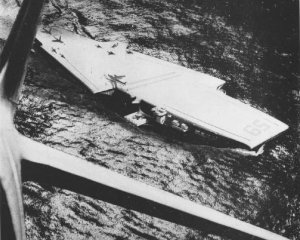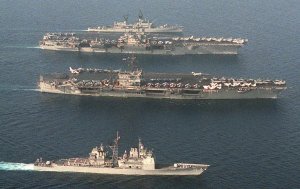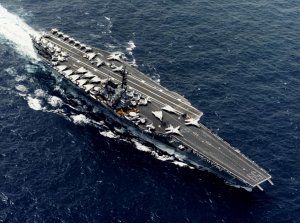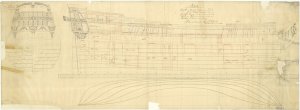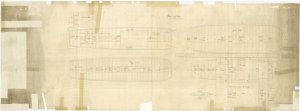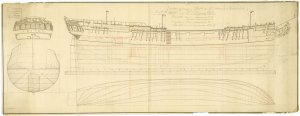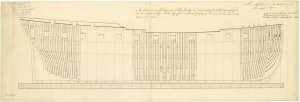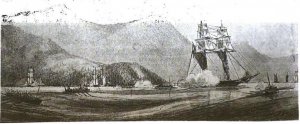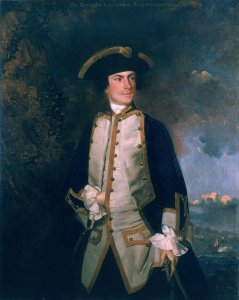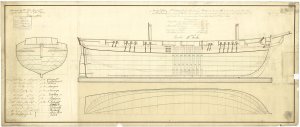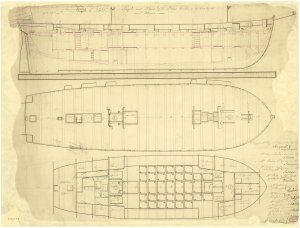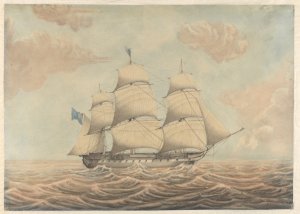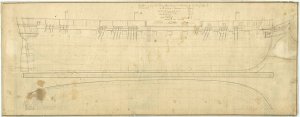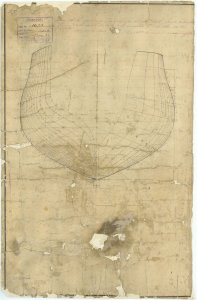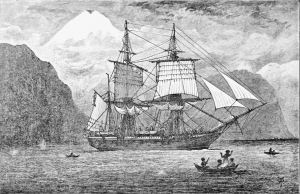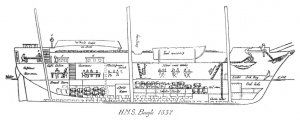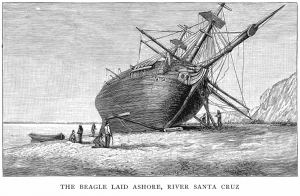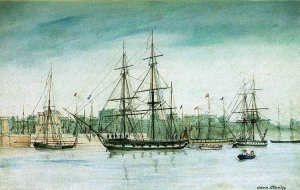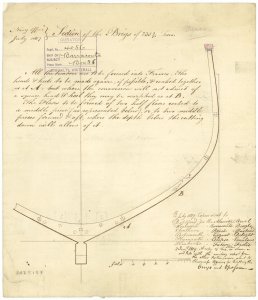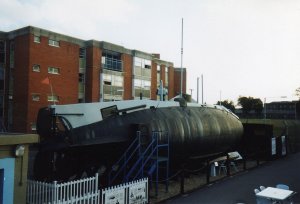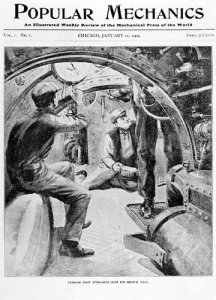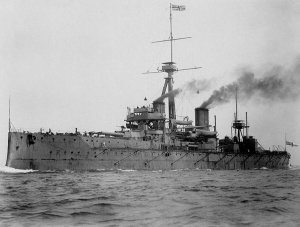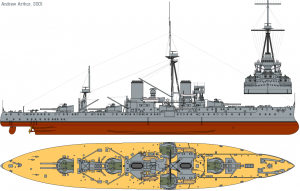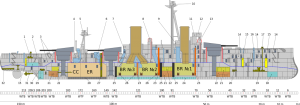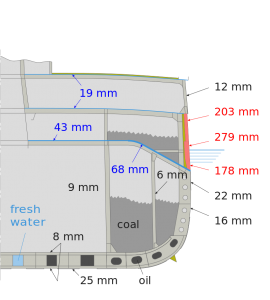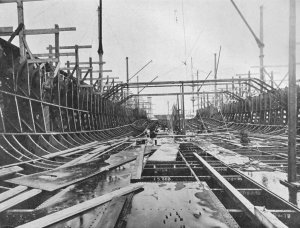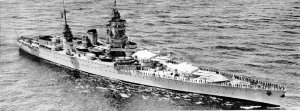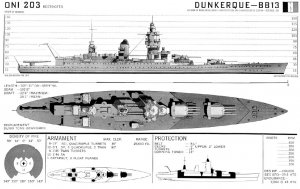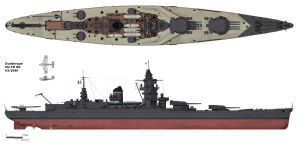Today in Naval History - Naval / Maritime Events in History
30 September 1909 – Launch of HMS Neptune was a dreadnought battleship
HMS Neptune was a dreadnought battleship built for the Royal Navy in the first decade of the 20th century, the sole ship of her class. She was the first British battleship to be built with superfiring guns. Shortly after her completion in 1911, she carried out trials of an experimental fire-control director and then became the flagship of the Home Fleet. Neptune became a private ship in early 1914 and was assigned to the 1st Battle Squadron.
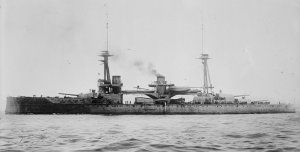
The ship became part of the Grand Fleet when it was formed shortly after the beginning of the First World War in August 1914. Aside from participating in the Battle of Jutland in May 1916, and the inconclusive Action of 19 August several months later, her service during the war generally consisted of routine patrols and training in the North Sea. Neptune was deemed obsolete after the war and was reduced to reserve before being sold for scrap in 1922 and subsequently broken up.
Background and description

Right elevation and plan from Brassey's Naval Annual 1915
The launch of Dreadnought in 1906 precipitated a naval arms race when Germany accelerated its naval construction plans in response. Despite this sudden expansion of another nation's fleet, the British Admiralty felt secure in the knowledge that Germany would only have four modern capital ships in commission by 1910, while the Royal Navy would have eleven. Accordingly they only proposed the construction of a single battleship and a battlecruiser in the 1908–1909 naval budget that they sent to the government in December. The Liberals, committed to reducing military expenditures and increasing social welfare spending, wished to cut the budget by £1,340,000 below the previous year's budget, but were ultimately persuaded not to do so after the Prime Minister, Sir Henry Campbell-Bannerman, was thoroughly briefed on each part of the budget in February 1908. The debates over the budget in March were heated; critics were dissatisfied with the number of ships being built, arguing that the Government was too complacent about the superiority of the Royal Navy over the Imperial German Navy, but they were satisfied when H. H. Asquith, Chancellor of the Exchequer, filling in for the fatally-ill Prime Minister, announced that the government was prepared to build as many dreadnoughts as required to negate any possible German superiority as of the end of 1911.
Neptune was an improved version of the preceding St Vincent class with additional armour and the armament rearranged for greater efficiency. She was the first British dreadnought that differed in her gun turret layout from Dreadnought. Unlike the earlier ships, her wing turrets were staggered "en echelon" so that all five turrets could shoot on the broadside, although in practise the blast damage to the superstructure and boats made this impractical except in an emergency. This was done to match the 10-gun broadside of the latest foreign designs like the American Delaware class, although the all-centreline turret configuration of the American ships eliminated the blast problems that compromised the effectiveness of the "en echelon" arrangement. Neptunewas also the first British dreadnought to be equipped with superfiring turrets, in an effort to shorten the ship and reduce costs. A further saving in length was achieved by siting the ship's boats on girders over the two wing turrets to reduce the length of the vessel. The drawback to this arrangement was that if the girders were damaged during combat, they could fall onto the turrets, immobilising them. The bridge was also situated above the conning tower, which similarly risked being obscured if the bridge collapsed.
Neptune had an overall length of 546 feet (166.4 m), a beam of 85 feet (25.9 m), and a deep draught of 28 feet 6 inches (8.7 m).[4] She displaced 19,680 long tons (20,000 t) at normal load and 23,123 long tons (23,494 t) at deep load. The ship had a metacentric height of 6.5 feet (2.0 m) at deep load. Her crew numbered about 756 officers and ratings upon completion and 813 in 1914.
The ship was powered by two sets of Parsons direct-drive steam turbines, each of which was housed in a separate engine room. The outer propeller shafts were coupled to the high-pressure turbines and these exhausted into low-pressure turbines which drove the inner shafts. The turbines used steam from eighteen Yarrow boilers at a working pressure of 235 psi (1,620 kPa; 17 kgf/cm2). They were rated at 25,000 shaft horsepower (19,000 kW) and gave Neptune a maximum speed of 21 knots (39 km/h; 24 mph). She carried a maximum of 2,710 long tons (2,753 t) of coal and an additional 790 long tons (803 t) of fuel oil that was sprayed on the coal to increase its burn rate. This gave her a range of 6,330 nautical miles (11,720 km; 7,280 mi) at a cruising speed of 10 knots (19 km/h; 12 mph).
Armament

Arrangement of Neptune's main-gun turrets, bow to the right
Neptune was equipped with ten 50-calibre breech-loading (BL) 12-inch (305 mm) Mark XI guns in five hydraulically powered twin-gun turrets, three along the centreline and the remaining two as wing turrets. The centreline turrets were designated 'A', 'X' and 'Y', from front to rear, and the port and starboard wing turrets were 'P' and 'Q' respectively. The guns had a maximum elevation of +20° which gave them a range of 21,200 yards (19,385 m). They fired 850-pound (386 kg) projectiles at a muzzle velocity of 2,825 ft/s (861 m/s) at a rate of two rounds per minute. The ship carried 100 shells per gun.
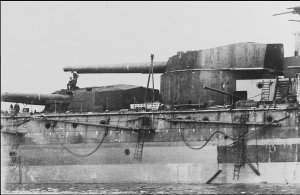
The ship's aft 12-inch gun turrets
Neptune was the first British dreadnought with her secondary armament of sixteen 50-calibre BL four-inch (102 mm) Mark VII guns installed in unshielded single mounts in the superstructure. This change was made to address the problems that plagued the turret-roof locations used in earlier battleships. Notably, the exposed guns were difficult to work when the main armament was in action as was replenishing their ammunition. Furthermore, the guns could not be centrally controlled to coordinate fire at the most dangerous targets. The guns had a maximum elevation of +15° which gave them a range of 11,400 yd (10,424 m). They fired 31-pound (14.1 kg) projectiles at a muzzle velocity of 2,821 ft/s (860 m/s). They were provided with 150 rounds per gun. Four quick-firing three-pounder (1.9 in (47 mm)) Hotchkiss saluting guns were also carried. The ships were equipped with three 18-inch (450 mm) submerged torpedo tubes, one on each broadside and another in the stern, for which 18 torpedoes were provided.
Fire control
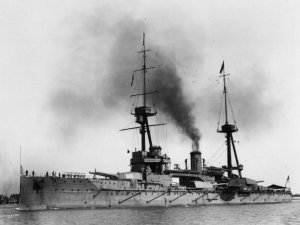
Neptune, 1911. The gunnery director is the round object halfway up the foremast. Torpedo nets and their supporting booms are visible on the side of the hull.
The control positions for the main armament were located in the spotting tops at the head of the fore and mainmasts. Data from a nine-foot (2.7 m) Barr and Stroud coincidence rangefinder located at each control position was input into a Dumaresq mechanical computer and electrically transmitted to Vickers range clocks located in the transmitting station located beneath each position on the main deck, where it was converted into elevation and deflection data for use by the guns. The target's data was also graphically recorded on a plotting table to assist the gunnery officer in predicting the movement of the target. The turrets, transmitting stations, and control positions could be connected in almost any combination.
Neptune was the first British dreadnought to be built with a gunnery director, albeit an experimental prototype designed by Vice-Admiral Sir Percy Scott. This was mounted on the foremast, underneath the spotting top and electrically provided data to the turrets via pointer on a dial, which the turret crewmen only had to follow. The director layer fired the guns simultaneously which aided in spotting the shell splashes and minimised the effects of the roll on the dispersion of the shells. The ship's director was later replaced as a new one was ordered in 1913 and installed by May 1916.
Additional nine-foot rangefinders, protected by armoured hoods, were added for each gun turret in late 1914. Furthermore, the ship was fitted with Mark I Dreyer Fire-control Tables by early 1916 in each transmission station that combined the functions of the Dumaresq and the range clock.
Armour
Neptune had a waterline belt of Krupp cemented armour that was 10 inches (254 mm) thick between the fore and aftmost barbettes that reduced to 2.5 inches (64 mm) before it reached the ships' ends. It covered the side of the hull from the middle deck down to 4 feet 4 inches (1.3 m) below the waterline where it thinned to 8 inches (203 mm) amidships. Above this was a strake of 8-inch armour. The forward oblique 5-inch (127 mm) bulkheads connected the amidships portion of waterline and upper armour belts once they reached the outer portions of the forward barbette. Similarly the aft bulkhead connected the armour belts to the rearmost barbette, although it was 8 inches thick. The three centreline barbettes were protected by armour 9 inches (229 mm) thick above the main deck and thinned to 5 inches (127 mm) below it. The wing barbettes were similar except that they had 10 inches of armour on their outer faces. The gun turrets had 11-inch (279 mm) faces and sides with 3-inch roofs.
The three armoured decks ranged in thickness from 1.25 to 3 inches (32 to 76 mm) with the greater thicknesses outside the central armoured citadel. The front and sides of the conning tower were protected by 11-inch plates, although the rear and roof were 8 inches and 3 inches thick respectively. The torpedo control tower aft had 3-inch sides and a 2-inch roof. Neptune had two longitudinal anti-torpedo bulkheads that ranged in thickness from 1 to 3 inches (25 to 76 mm) and extended from the forward end of 'A' barbette to the end of 'Y' magazine. She was the first British dreadnought to protect her boiler uptakes with 1-inch armour plates.[18] The compartments between the boiler rooms were used as coal bunkers.
Modifications
Gun shields were fitted to the forward four-inch guns after September 1913 and the upper forward four-inch guns were enclosed. In 1914–1915, the upper amidships four-inch guns were enclosed, the forward boat girder was removed and a three-inch (76 mm) anti-aircraft (AA) gun was added on the quarterdeck. Approximately 50 long tons (51 t) of deck armour was added after the Battle of Jutland in May 1916. By early 1917, four guns had been removed from the aft superstructure and a single four-inch AA gun had been added, for a total of a dozen four-inch guns. The stern torpedo tube was removed in 1917–1918 as was the aft spotting top. A high-angle rangefinder was fitted on the remaining spotting top and a flying-off platform was installed on the 'A' turret in 1918.
Construction
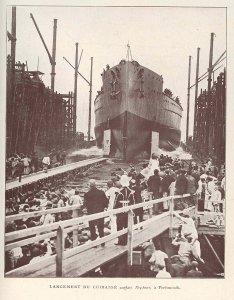
Neptune being launched, 30 September 1909
Neptune, named after the Roman god of the sea, was ordered on 14 December 1908. She was laid down at HM Dockyard, Portsmouth on 19 January 1909, launched on 30 September and completed in January 1911 at the cost of £1,668,916, including her armament. The ship was commissioned on 19 January 1911 for trials with Scott's experimental gunnery director that lasted until 11 March and were witnessed by Rear-Admiral Sir John Jellicoe, commander of the Atlantic Fleet. Neptune relieved Dreadnought as the flagship of the Home Fleet and of the 1st Division on 25 March and then participated in the Coronation Fleet Review at Spithead on 24 June. On 1 May 1912, the 1st Division was renamed the 1st Battle Squadron (BS); Neptune was relieved as the squadron's flagship on 22 June. The ship participated in the Parliamentary Naval Review on 9 July at Spithead. Neptune became a private ship on 10 March 1914 when she was replaced by Iron Duke as the flagship of the Home Fleet and rejoined the 1st BS
https://en.wikipedia.org/wiki/HMS_Neptune_(1909)
30 September 1909 – Launch of HMS Neptune was a dreadnought battleship
HMS Neptune was a dreadnought battleship built for the Royal Navy in the first decade of the 20th century, the sole ship of her class. She was the first British battleship to be built with superfiring guns. Shortly after her completion in 1911, she carried out trials of an experimental fire-control director and then became the flagship of the Home Fleet. Neptune became a private ship in early 1914 and was assigned to the 1st Battle Squadron.

The ship became part of the Grand Fleet when it was formed shortly after the beginning of the First World War in August 1914. Aside from participating in the Battle of Jutland in May 1916, and the inconclusive Action of 19 August several months later, her service during the war generally consisted of routine patrols and training in the North Sea. Neptune was deemed obsolete after the war and was reduced to reserve before being sold for scrap in 1922 and subsequently broken up.
Background and description

Right elevation and plan from Brassey's Naval Annual 1915
The launch of Dreadnought in 1906 precipitated a naval arms race when Germany accelerated its naval construction plans in response. Despite this sudden expansion of another nation's fleet, the British Admiralty felt secure in the knowledge that Germany would only have four modern capital ships in commission by 1910, while the Royal Navy would have eleven. Accordingly they only proposed the construction of a single battleship and a battlecruiser in the 1908–1909 naval budget that they sent to the government in December. The Liberals, committed to reducing military expenditures and increasing social welfare spending, wished to cut the budget by £1,340,000 below the previous year's budget, but were ultimately persuaded not to do so after the Prime Minister, Sir Henry Campbell-Bannerman, was thoroughly briefed on each part of the budget in February 1908. The debates over the budget in March were heated; critics were dissatisfied with the number of ships being built, arguing that the Government was too complacent about the superiority of the Royal Navy over the Imperial German Navy, but they were satisfied when H. H. Asquith, Chancellor of the Exchequer, filling in for the fatally-ill Prime Minister, announced that the government was prepared to build as many dreadnoughts as required to negate any possible German superiority as of the end of 1911.
Neptune was an improved version of the preceding St Vincent class with additional armour and the armament rearranged for greater efficiency. She was the first British dreadnought that differed in her gun turret layout from Dreadnought. Unlike the earlier ships, her wing turrets were staggered "en echelon" so that all five turrets could shoot on the broadside, although in practise the blast damage to the superstructure and boats made this impractical except in an emergency. This was done to match the 10-gun broadside of the latest foreign designs like the American Delaware class, although the all-centreline turret configuration of the American ships eliminated the blast problems that compromised the effectiveness of the "en echelon" arrangement. Neptunewas also the first British dreadnought to be equipped with superfiring turrets, in an effort to shorten the ship and reduce costs. A further saving in length was achieved by siting the ship's boats on girders over the two wing turrets to reduce the length of the vessel. The drawback to this arrangement was that if the girders were damaged during combat, they could fall onto the turrets, immobilising them. The bridge was also situated above the conning tower, which similarly risked being obscured if the bridge collapsed.
Neptune had an overall length of 546 feet (166.4 m), a beam of 85 feet (25.9 m), and a deep draught of 28 feet 6 inches (8.7 m).[4] She displaced 19,680 long tons (20,000 t) at normal load and 23,123 long tons (23,494 t) at deep load. The ship had a metacentric height of 6.5 feet (2.0 m) at deep load. Her crew numbered about 756 officers and ratings upon completion and 813 in 1914.
The ship was powered by two sets of Parsons direct-drive steam turbines, each of which was housed in a separate engine room. The outer propeller shafts were coupled to the high-pressure turbines and these exhausted into low-pressure turbines which drove the inner shafts. The turbines used steam from eighteen Yarrow boilers at a working pressure of 235 psi (1,620 kPa; 17 kgf/cm2). They were rated at 25,000 shaft horsepower (19,000 kW) and gave Neptune a maximum speed of 21 knots (39 km/h; 24 mph). She carried a maximum of 2,710 long tons (2,753 t) of coal and an additional 790 long tons (803 t) of fuel oil that was sprayed on the coal to increase its burn rate. This gave her a range of 6,330 nautical miles (11,720 km; 7,280 mi) at a cruising speed of 10 knots (19 km/h; 12 mph).
Armament

Arrangement of Neptune's main-gun turrets, bow to the right
Neptune was equipped with ten 50-calibre breech-loading (BL) 12-inch (305 mm) Mark XI guns in five hydraulically powered twin-gun turrets, three along the centreline and the remaining two as wing turrets. The centreline turrets were designated 'A', 'X' and 'Y', from front to rear, and the port and starboard wing turrets were 'P' and 'Q' respectively. The guns had a maximum elevation of +20° which gave them a range of 21,200 yards (19,385 m). They fired 850-pound (386 kg) projectiles at a muzzle velocity of 2,825 ft/s (861 m/s) at a rate of two rounds per minute. The ship carried 100 shells per gun.

The ship's aft 12-inch gun turrets
Neptune was the first British dreadnought with her secondary armament of sixteen 50-calibre BL four-inch (102 mm) Mark VII guns installed in unshielded single mounts in the superstructure. This change was made to address the problems that plagued the turret-roof locations used in earlier battleships. Notably, the exposed guns were difficult to work when the main armament was in action as was replenishing their ammunition. Furthermore, the guns could not be centrally controlled to coordinate fire at the most dangerous targets. The guns had a maximum elevation of +15° which gave them a range of 11,400 yd (10,424 m). They fired 31-pound (14.1 kg) projectiles at a muzzle velocity of 2,821 ft/s (860 m/s). They were provided with 150 rounds per gun. Four quick-firing three-pounder (1.9 in (47 mm)) Hotchkiss saluting guns were also carried. The ships were equipped with three 18-inch (450 mm) submerged torpedo tubes, one on each broadside and another in the stern, for which 18 torpedoes were provided.
Fire control

Neptune, 1911. The gunnery director is the round object halfway up the foremast. Torpedo nets and their supporting booms are visible on the side of the hull.
The control positions for the main armament were located in the spotting tops at the head of the fore and mainmasts. Data from a nine-foot (2.7 m) Barr and Stroud coincidence rangefinder located at each control position was input into a Dumaresq mechanical computer and electrically transmitted to Vickers range clocks located in the transmitting station located beneath each position on the main deck, where it was converted into elevation and deflection data for use by the guns. The target's data was also graphically recorded on a plotting table to assist the gunnery officer in predicting the movement of the target. The turrets, transmitting stations, and control positions could be connected in almost any combination.
Neptune was the first British dreadnought to be built with a gunnery director, albeit an experimental prototype designed by Vice-Admiral Sir Percy Scott. This was mounted on the foremast, underneath the spotting top and electrically provided data to the turrets via pointer on a dial, which the turret crewmen only had to follow. The director layer fired the guns simultaneously which aided in spotting the shell splashes and minimised the effects of the roll on the dispersion of the shells. The ship's director was later replaced as a new one was ordered in 1913 and installed by May 1916.
Additional nine-foot rangefinders, protected by armoured hoods, were added for each gun turret in late 1914. Furthermore, the ship was fitted with Mark I Dreyer Fire-control Tables by early 1916 in each transmission station that combined the functions of the Dumaresq and the range clock.
Armour
Neptune had a waterline belt of Krupp cemented armour that was 10 inches (254 mm) thick between the fore and aftmost barbettes that reduced to 2.5 inches (64 mm) before it reached the ships' ends. It covered the side of the hull from the middle deck down to 4 feet 4 inches (1.3 m) below the waterline where it thinned to 8 inches (203 mm) amidships. Above this was a strake of 8-inch armour. The forward oblique 5-inch (127 mm) bulkheads connected the amidships portion of waterline and upper armour belts once they reached the outer portions of the forward barbette. Similarly the aft bulkhead connected the armour belts to the rearmost barbette, although it was 8 inches thick. The three centreline barbettes were protected by armour 9 inches (229 mm) thick above the main deck and thinned to 5 inches (127 mm) below it. The wing barbettes were similar except that they had 10 inches of armour on their outer faces. The gun turrets had 11-inch (279 mm) faces and sides with 3-inch roofs.
The three armoured decks ranged in thickness from 1.25 to 3 inches (32 to 76 mm) with the greater thicknesses outside the central armoured citadel. The front and sides of the conning tower were protected by 11-inch plates, although the rear and roof were 8 inches and 3 inches thick respectively. The torpedo control tower aft had 3-inch sides and a 2-inch roof. Neptune had two longitudinal anti-torpedo bulkheads that ranged in thickness from 1 to 3 inches (25 to 76 mm) and extended from the forward end of 'A' barbette to the end of 'Y' magazine. She was the first British dreadnought to protect her boiler uptakes with 1-inch armour plates.[18] The compartments between the boiler rooms were used as coal bunkers.
Modifications
Gun shields were fitted to the forward four-inch guns after September 1913 and the upper forward four-inch guns were enclosed. In 1914–1915, the upper amidships four-inch guns were enclosed, the forward boat girder was removed and a three-inch (76 mm) anti-aircraft (AA) gun was added on the quarterdeck. Approximately 50 long tons (51 t) of deck armour was added after the Battle of Jutland in May 1916. By early 1917, four guns had been removed from the aft superstructure and a single four-inch AA gun had been added, for a total of a dozen four-inch guns. The stern torpedo tube was removed in 1917–1918 as was the aft spotting top. A high-angle rangefinder was fitted on the remaining spotting top and a flying-off platform was installed on the 'A' turret in 1918.
Construction

Neptune being launched, 30 September 1909
Neptune, named after the Roman god of the sea, was ordered on 14 December 1908. She was laid down at HM Dockyard, Portsmouth on 19 January 1909, launched on 30 September and completed in January 1911 at the cost of £1,668,916, including her armament. The ship was commissioned on 19 January 1911 for trials with Scott's experimental gunnery director that lasted until 11 March and were witnessed by Rear-Admiral Sir John Jellicoe, commander of the Atlantic Fleet. Neptune relieved Dreadnought as the flagship of the Home Fleet and of the 1st Division on 25 March and then participated in the Coronation Fleet Review at Spithead on 24 June. On 1 May 1912, the 1st Division was renamed the 1st Battle Squadron (BS); Neptune was relieved as the squadron's flagship on 22 June. The ship participated in the Parliamentary Naval Review on 9 July at Spithead. Neptune became a private ship on 10 March 1914 when she was replaced by Iron Duke as the flagship of the Home Fleet and rejoined the 1st BS
https://en.wikipedia.org/wiki/HMS_Neptune_(1909)



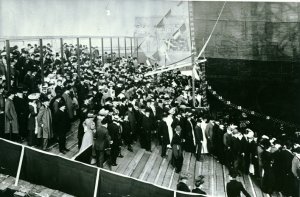
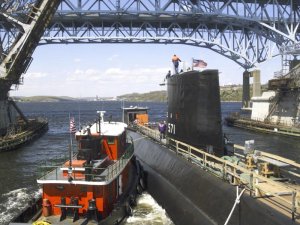
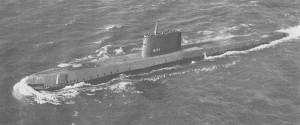
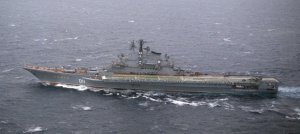
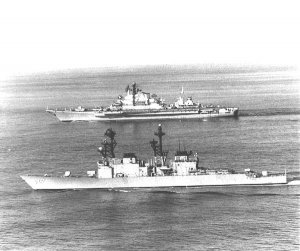
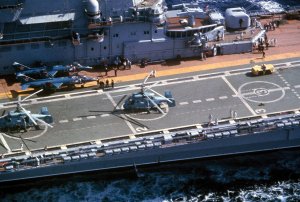

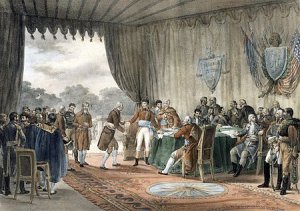

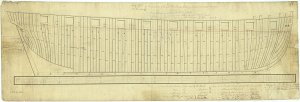
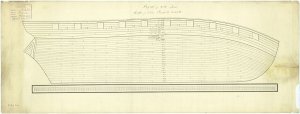
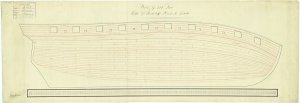
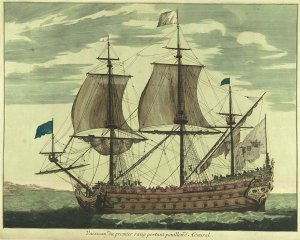
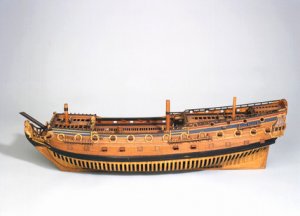
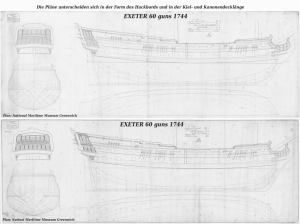
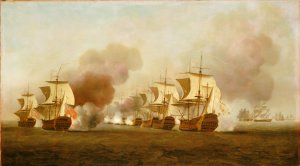
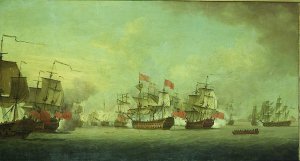
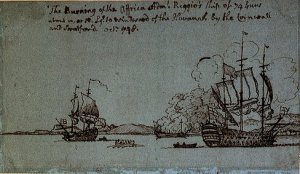

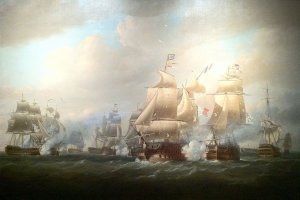
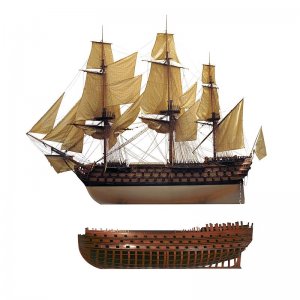
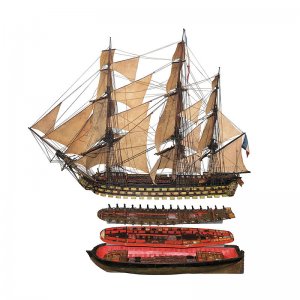
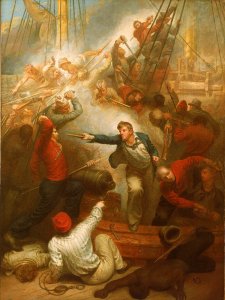
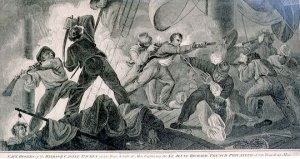

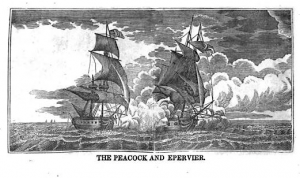
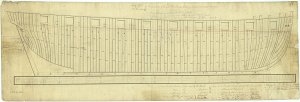
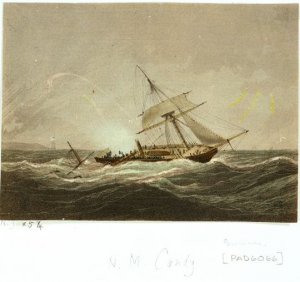

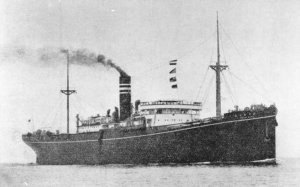
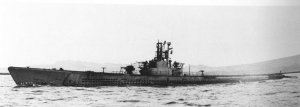
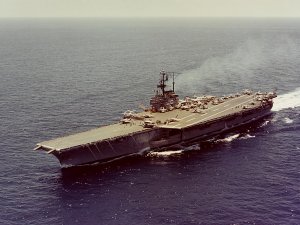
 Shipbuilding
Shipbuilding